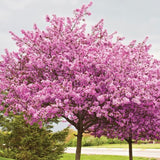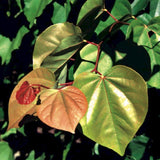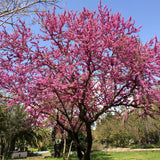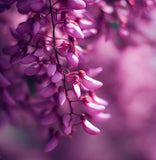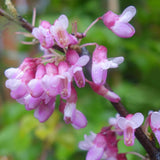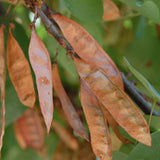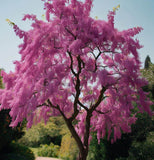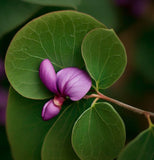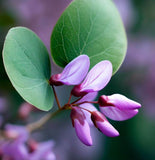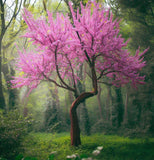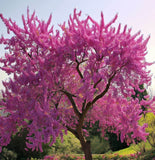Cercis siliquastrum (Judas Tree)
Cercis siliquastrum (Judas Tree) is a small deciduous tree native to the Mediterranean region and parts of western Asia. The Judas Tree is a small to medium-sized tree that typically grows to a height of 15 to 30 feet (4.5 to 9 meters). It has a spreading, often multi-stemmed growth habit with a rounded crown. The bark is smooth and gray when young, but it becomes rough and scaly as the tree matures. The leaves are alternate, heart-shaped, and medium green in color. They turn yellow or bronze in the fall before dropping.
Flowers and Fruits: One of the striking features of the Judas Tree is its vibrant and abundant flowers. In spring, before the leaves appear, the tree is covered in clusters of small, pea-like flowers that range in color from pink to purplish-red. The flowers emerge directly from the branches and trunk, creating a stunning display. After flowering, the tree produces flat, reddish-brown pods that contain seeds. The pods persist on the tree and can add visual interest.
Habitat and Range: The Judas Tree is well adapted to Mediterranean climates and is often found in rocky slopes, woodland edges, and scrubland. It prefers well-drained soils and is tolerant of drought. The tree is native to the Mediterranean region, including parts of southern Europe and western Asia.
Uses: The Judas Tree is primarily valued for its ornamental qualities. It is commonly planted in gardens, parks, and landscapes for its beautiful spring flowers. The tree's compact size and attractive branching pattern make it suitable for smaller gardens. Additionally, the wood of the Judas Tree is hard and dense, but it is not widely used commercially.
Ecological Importance: The flowers of the Judas Tree attract bees and other pollinators, providing a valuable food source early in the season. The tree's seeds are consumed by birds and small mammals, helping to disperse the tree's genetic material. The tree also provides shelter and nesting sites for birds and other wildlife.
Cultural Significance: The Judas Tree holds cultural significance in various regions. According to legend, the tree earned its name because Judas Iscariot, the biblical figure, hanged himself from a tree of this species, resulting in its red flowers. In some cultures, the Judas Tree is associated with Easter and is seen as a symbol of betrayal and redemption.
Botanical Name : Cercis siliquastrum
Common Name : Judas Tree
Height : 20-25ft
Spread : 10-15ft
Germination Info : Scarify seed and then cold moist stratify for 30-60 days
Hardiness zone : 7-9
Average seed per ounce : Approx. 1,250

